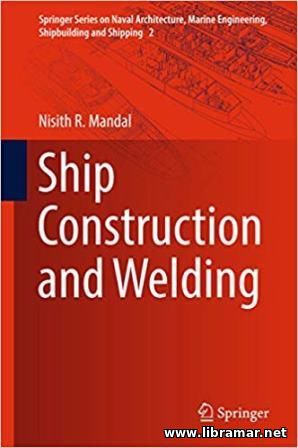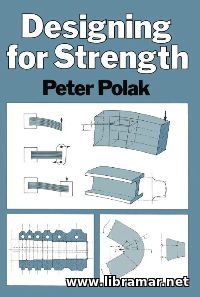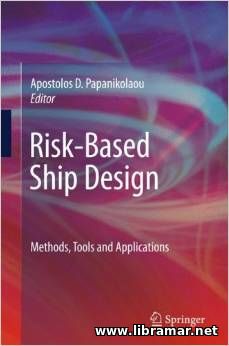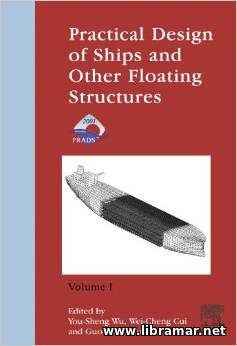 The present publication was written the address the various areas of the ship hull construction, covering literally everything starting from the types of ships and materials used for construction, and up to the welding technologies applied and quality control. The material is arranged in a very logical way and deals with the structural arrangement of the vessels featuring transverse and longitudinal; systems of framing, on the basis of the calculated service loads.
The author provides detailed and understandable explanations of the essential structural elements of the hull together with the most commonly used structural sub-assemblies. The construction of the ship’s double-bottom has been presented in detail along with the fore- and aft-end structures, midship section and other critically important areas. All materials normally used for the ship construction have been covered, including steel, FRP and aluminum alloys, with particular attention paid to the preparation of the construction materials, cutting and joining techniques, welding etc.
The formation of the residual stress in the hull structures has been addressed with the focus made on the buckling of thin metal panels caused by the welding. In short, all aspects of ship hull construction have been covered including the methods used for the nondestructive examination of the metal surfaces and welding seams.
 The content of the present publication of designing for strength is mainly intended to provide a good coverage of the strength related calculations for the general design to the standards considered suitable for the engineering courses. However decision was made by the author of the volume to skip the academic soil and fracture mechanics, advanced theoretical civil engineering, plasticity and other matters.
The original intention is to explain in details the main stress forms and then proceed to the critical examination of the associated material properties and relevant testing. After that the author explains the stress concentration followed by the information on the applications, with the latter being treated in fundamental terms, relevant aspects and procedures that are specific to the constructions and pressure vessels.
The volume concludes with the numerous real case studies providing additional information for easier understanding of the subject. A huge part of the material has been presented in a quite condensed format with some references made to the publications available today, all listed in a separate section, all of the references have been selected by the author of the book.
 With more than seventy percent of the surface of our planet covered by the water, the maritime transportation of people and goods is deservedly considered one of the critically important ways of moving them all across the continents. The international maritime transportation has always been in the extensive use, throughout the history of the mankind since it allows numerous achievements that would otherwise not be possible in the other ways, including the technological, commercial, social and other areas.
This has eventually resulted in the necessity of getting to the better understanding of the ship design, starting from the very moment when the human decided to board the first boat. There have been thousands of ship designers engaged in the process of making the boats safer and faster.
However, it was always too difficult for the people to develop a due knowledge of all aspects of the marine engineering. This is where the engineering mathematics came to help them though the application of the math methods and different techniques of solving problems. In this edition of the “Engineering Mathematics” title the team of experts attempts to employ the subject knowledge in order to get proper recommendations related to the various areas of the ship design
 The FEM is considered one of the best numerical methods used to solve the differential equations describing many various engineering problems. This new publication is covering the fundamental theory of the final element method including appendices on each program. The authors have introduced the concepts of this method enabling engineers to use it efficiently and also to properly interpret the obtained results.
They will learn all finite elements including one, two and three dimensional elements. The book is written excellently; the readers will definitely enjoy the examples provided in the book and illustrating the concepts. The book has been found to be among the best available resources to learn the FEM, suitable for the graduate and undergraduate levels.
The content is perfectly organized and procedures are well explained and illustrated. Some of the relevant programs including MATLAB and ANSYS have also been covered and provided with detailed explanations. This is highly recommended volume to the people willing to have a clear idea about the FEM and its applications and understand the fundamentals of this method to be able to apply it.
 The UMV, standing for the unmanned marine vehicles, is a collective term which is commonly used for describing the autonomous vehicles operating under the surface of the water, ROVs, i.e. remotely operated vehicles, unmanned surface crafts and semi-submersibles.
In fact, the content of the present volume continues to familiarize readers with the advances in UMV, the process commenced within the original publication by these authors coming under the title Advances in Unmanned Marine Vehicles, published about ten years back.
Nowadays, there is quite considerable interest in these vehicles shown by the military, scientific and even civilian communities planning to undertake different missions while being autonomous or working together with some other vehicle.
This volume addresses many important topics, for instance the navigation guidance and controlling the UMVs etc. Recommended to the people with professional interest in the subject, willing to be in line with all latest developments in the field.
 When working on this volume, the author was pretty aware of the huge scope of the contemporary vessel design as well as the difficulties faced by the designers trying to place the different elements in the correct perspective. The significant increase in the world tonnage has eventually resulted in the progress with this task, and that is why the need for the food review appeared.
Apart from the discussions on the newly introduced design techniques, the content of the present title also focuses on the essential theory of the naval architecture, without which it would bake little to no sense to proceed any further. Every effort has been made to present the material in the way that would make it understandable to the students; it should not be, however, treated as the mere textbook of naval architecture.
The real intention of the author was to introduce students to the general scope of the most important areas of ship design. The volume is therefore highly recommended to the students of the naval architecture and ship design faculties; however it will be of practical use even to the specialists willing to improve or refresh their knowledge of the subject, expanding it to cover some new areas.
 The risk-based design of vessels is a newly established engineering area attracting more and more interest of the practicing designers, engineers and researchers from the various disciplines connected with the design and construction of ships, their operation and regulation.
There is a twofold motivation to use the risk-based approach - the implementation of a novel design considered safe but not yet approved or rational optimization of the existing design focusing on the safety but bearing the performance and efficiency in mind.
The content of this book derives from the information and technical knowledge obtained during the SAFEDOR project coordinated by GL. It is not the intention of the author to prepare a text-book for the ship design students noting that the contributors to this volume are still evolving. However, the volume is aiming to provide readers interested in the risk-based approaches to the ship design with a good understanding of the basic and details of these approaches and their integration.
The volume will facilitate the transfer of the knowledge gained in the course of the project to the whole maritime community and shall therefore be treated well since such transfer will play a very important role in improvement of the ship design techniques and eventually contribute to the safety of shipping.
 This publication contains the proceedings of the Eighth International Practical Ship Design Symposium which was held some years back in China. The author has collected the most important and relevant materials presented in the course of the subject symposium. The main aim of that world experts meeting was to discuss the latest advances in the field of ship design as well as professional disciplines, to exchange the knowledge and experience and promote further discussions.
The materials are arranged in three sections. The first section covers the design synthesis for the ships and floating systems, including life cycle cost considerations, optimization tools, parametric ship hull form design, impact loads, CFD tools used for the wave cancellation optimization, probabilistic analysis tools, and many other issues. The second part deals with the production and covers the composite materials, newly introduced production systems, welding distortions, innovations etc.
The last chapter is devoted to the hydromechanics and deals with the viscous flow and associated calculations, wash and wave resistance, simulation techniques, flow behavior, parametric studies, experimental and numerical evaluations, ship model tests, continuous wavelet transform and many others interesting topics.
|







